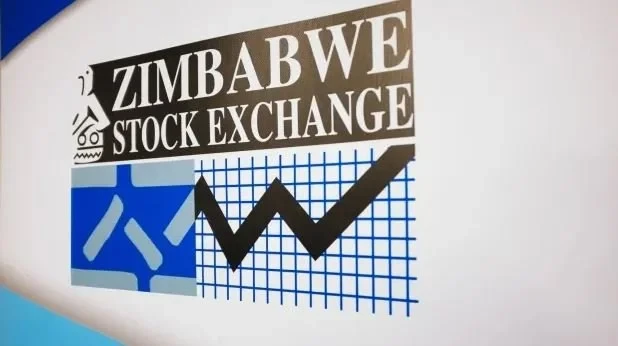
THE local currency marched on an unabated depreciation path on the parallel market, even as the pace of current decline is one of the steepest in four years.
Since the beginning of April, the Zimbabwe dollar (Zimdollar) lost 30% to the USD on the parallel market causing a huge market shock, which authorities are perplexed over, while the market is yet to fully comprehend the move, given the sustained onslaught.
On the other hand, the official market has recorded disproportionate losses, coming in at just 13% over the same period. On a year to date scale, the Zimdollar is now down 37% on the formal market and 57% on the parallel market.
This is alarmingly the quickest depreciation pace of the Zimdollar since its reintroduction in 2019. At the going rates, the parallel market is trading at a premium of 96% to the official market.
Data shows that in recent history, spates of spikes of similar magnitude have been recorded. The premium reached a record high in May 2022 before easing off and yet again rebounding in July of the same year.
From the period, August 2022 to the first quarter of 2023, the premium was largely stable at manageable levels. A spike in the exchange rate has the immediate consequence of eroding the purchasing power of the local unit, given price adjustments on ZWL priced goods, in line with the exchange rate movements.
Economic agents holding ZWL balances will effectively realise an exchange loss on their holdings, which would consequently reduce demand as income falls.
For business operators, exchange loss on local currency cash holdings increased while lagging adjustments in prices can result in losses on restocking. Most entities are typically forward pricing or cushioning the resultant outturn by participating on the auction market and reducing the volumes transactable in local currency. Despite these measures, companies still bear the brunt of reduced sales as incomes shrink. Outside of the depreciation, the lack of congruency and sharp variance between the formal and informal exchange rate creates problems with far reaching implications to the economy.
- New perspectives: Money laundering red flags in insurance sector
- Govt, CSOs start dialogue on PVO Bill
- New perspectives: Money laundering red flags in insurance sector
- Govt, CSOs start dialogue on PVO Bill
Keep Reading
Arbitrage opportunities increase with the widening of the gap between the two markets. The higher the premium the more lucrative or profitable the arbitrage becomes. Rent seekers exploiting the gaps are typically those closer to the institutions of power.
Equally the savvy agents with the ability to create schemes of moving money also benefit and perpetuate the crisis. On the other hand, the speculative borrowing prospects increase, rendering the current interest rates unviable. For the exporters, the huge variance reduces profitability and discourages production. One would, however, argue that the levels of export and general forex inflows swelled by the highest margin in 2022, thus discrediting the impact of higher exchange premium on propensity to produce.
Economic history has shown that producers tend to cut back significantly when the exchange rates are showing wider variances and this slows down economic growth. The exceptionality of years such as 2022 is due to a number of factors, including a return to normalcy post Covid-19, which would naturally mean higher production and consumer demand. Further for the commodities market, the boom continued with prices for most of the key minerals swelling on the global markets. This had a counteractive impact on the production as margins were partially recouped.
What brought us here
The general question everyone is grappled with given the exchange rate dynamics is what has just happened to warrant the market shock. It is nothing outside of this world that just happened. We have warned since February that the exchange rate will fall by an unprecedented margin this first half of 2023, given the monetary shock induced by the issuance of a massive chunk of sovereign paper.
Government issued Treasury Bills (TBs) valued at about US$1,45 billion in fulfilment of obligations due to some creditors and suppliers, prior to shelved.
For most of the last four years, government preferred to be methodical with suppliers, lengthening their payments period, revisiting their pricing, persuading them morally and instituting tighter controls of their liquidity through Financial Intelligence Unit (FIU) monitoring. The sudden drop of a chunk of the size of US$1,45 billion would mean more companies becoming liquid through a TBs dump on the secondary market. It qualifies as a dumb because the magnitude of discounts presently being offered in the secondary market are very huge at almost 50%.
Given the huge discounts, the acquirers would automatically have created a huge profit and thus new money through the transaction. For the seller, ready cash would also mean improved liquidity status weaponised to chase the elusive USD in the market.
This is the backdrop against which the ZWL is falling. It is very difficult to project the timing of the decline but one thing for sure was that it was coming and we forewarned via various articles. Further to the issuance of TBs, government is already gearing for the election and most tight policies regarding spend are being loosened to relieve pressure on the populace, perhaps as a tool to influence voter conduct.
This model has been repeated in all past election years and the consequences have been the same, a temporary economic growth and a worse off inflationary and exchange rate performance. Government has also undertaken to adjust the civil service wage bill by about 40%. This increases the resultant budget deficit envisaged for the year.
The occurrence of budget deficits has been at the centre of monetary instability in Zimbabwe for two decades to date. We do not anticipate a sustainable slowdown in the exchange rate depreciation in the near term.
We opine that government’s response through further liquidity mop ups only helps as a temporary measure, even so its effectiveness in the short run depends on government’s curtailment of its liquidity creation and injection into the market.
- Gwenzi is a financial analyst and MD of Equity Axis, a financial media firm offering business intelligence, economic and equity research. — [email protected].











